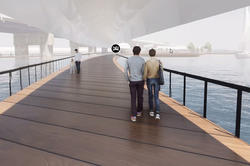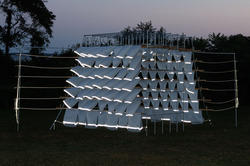RISD Interior Architecture students propose innovative designs for adding pedestrian and cycling lanes to the suspension bridge connecting Newport and Jamestown, RI.
RISD Projects at Venice Architecture Biennale Offer New Visions for the Built Environment
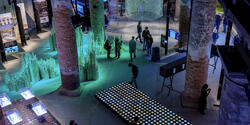
The halls of Venice are once again overflowing with innovative art and design installations by creatives from around the world as part of the Venice Biennale. This year’s architecture exhibition—Intelligens. Natural. Artificial. Collective—invites “different types of intelligence” to work together to rethink the built environment and includes two projects hatched at RISD: SpaceSuits.US and Crossing the Pell.
“In times of adaptation, architecture is at the center, and it needs to draw on multiple forms of intelligence, reach out across generations and disciplines, and become as flexible and dynamic as the world we are now designing for,” says show curator Carlo Ratti.
The exhibition begins in the Corderie dell’Arsenale, where more than 750 architects, engineers, mathematicians, climate scientists, philosophers, artists, chefs, coders, writers, woodcarvers, farmers and fashion designers are sharing projects focused on global climate change and population decline. Among them is SpaceSuits.US, a 1:4 scale installation of a typical American timber-framed house clad in a tailored skin similar to a space suit designed for an astronaut.
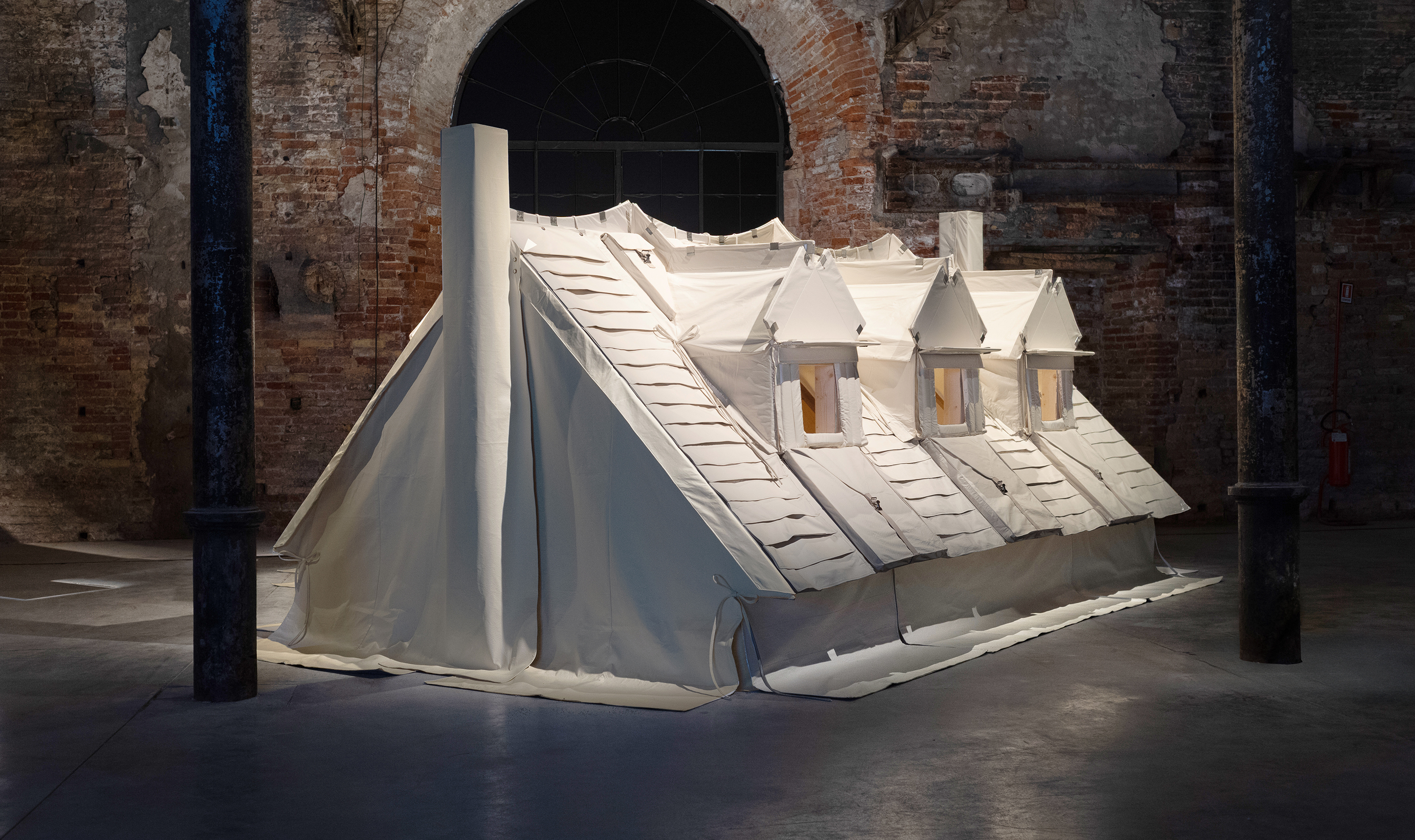
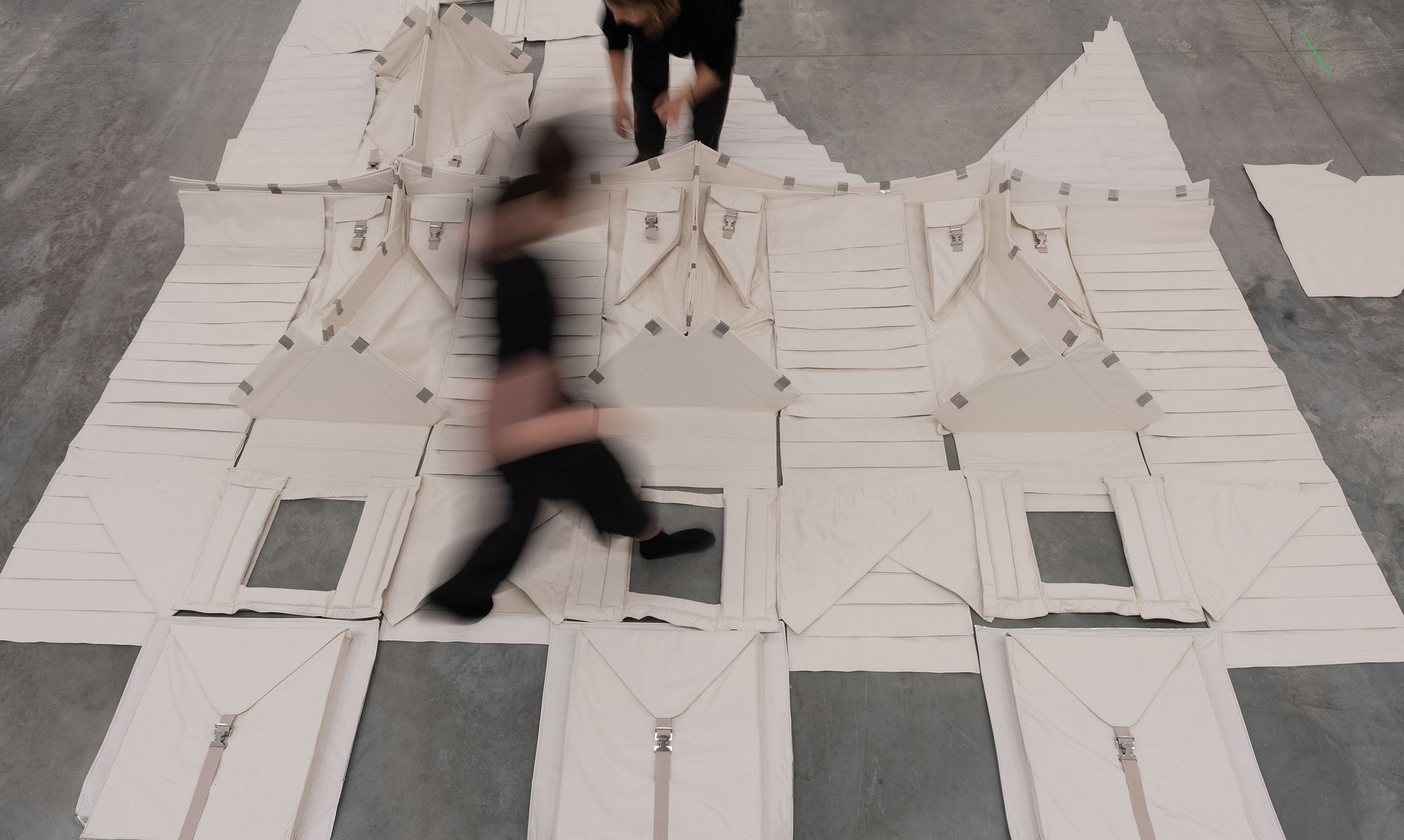
“The project rethinks how we can improve building and insulation techniques for existing housing stock,” Assistant Professor of Architecture Emily Ezquerro explains. “It proposes a shift in material cultures and climate solutions by leveraging the adaptability and protective nature of space suits.”
Ezquerro’s collaborators—fellow RISD Architecture faculty members Sam Sheffer and Stephanie Rae Lloyd, along with Charles Kim, Emma Sheffer and Jero Ezquerro—worked together to merge soft, thin layers of insulation with standard American construction, advocating for a new model of architecture in which climate-responsive design meets the needs of urban life.
Members of the team also presented a public talk and workshop about quilting and its potential applications in architecture. “The workshop addressed how soft knowledge can be leveraged against architectural technology as a way to produce tailored assemblies responding to social and environmental pressures,” Lloyd says.
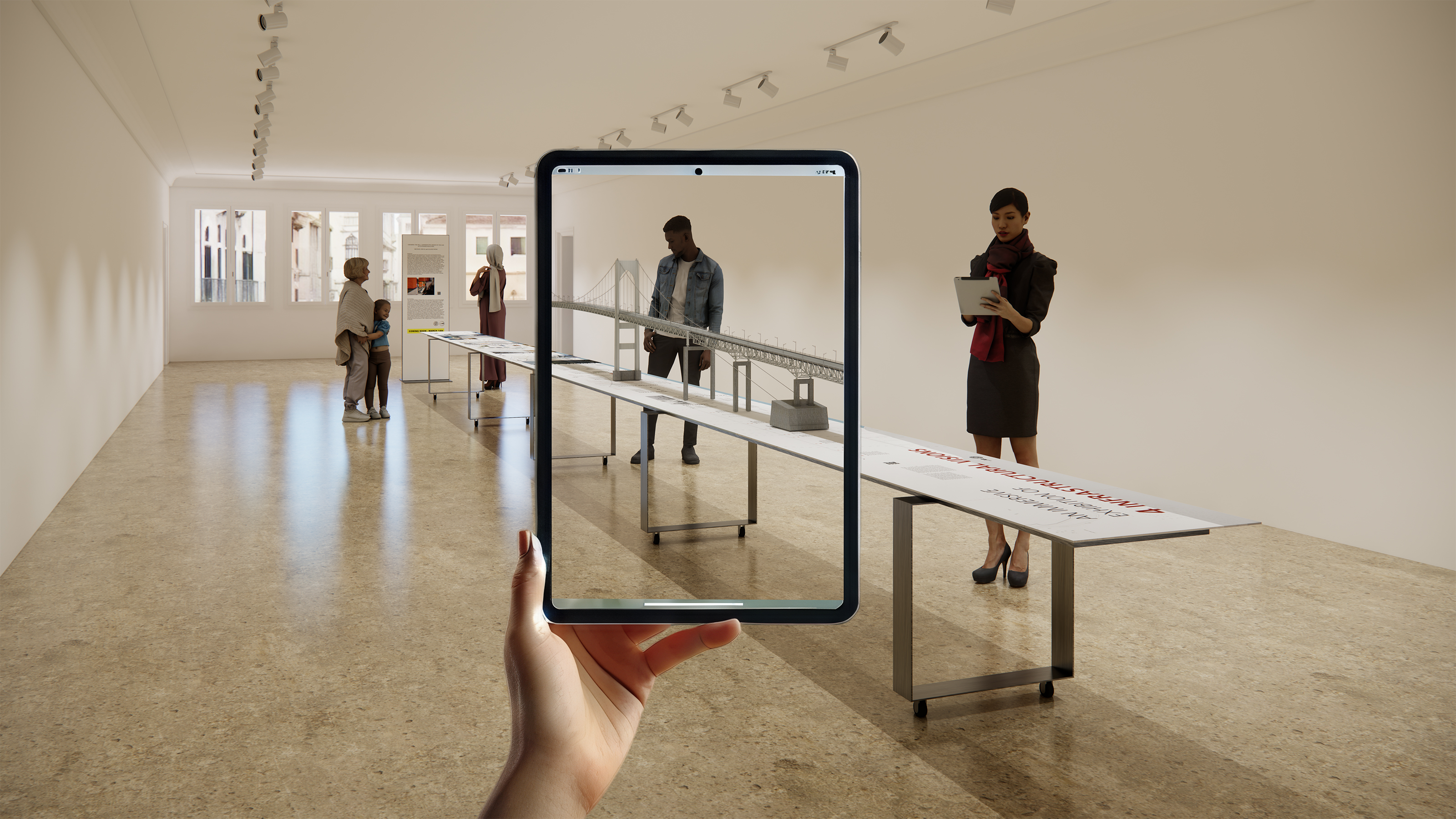
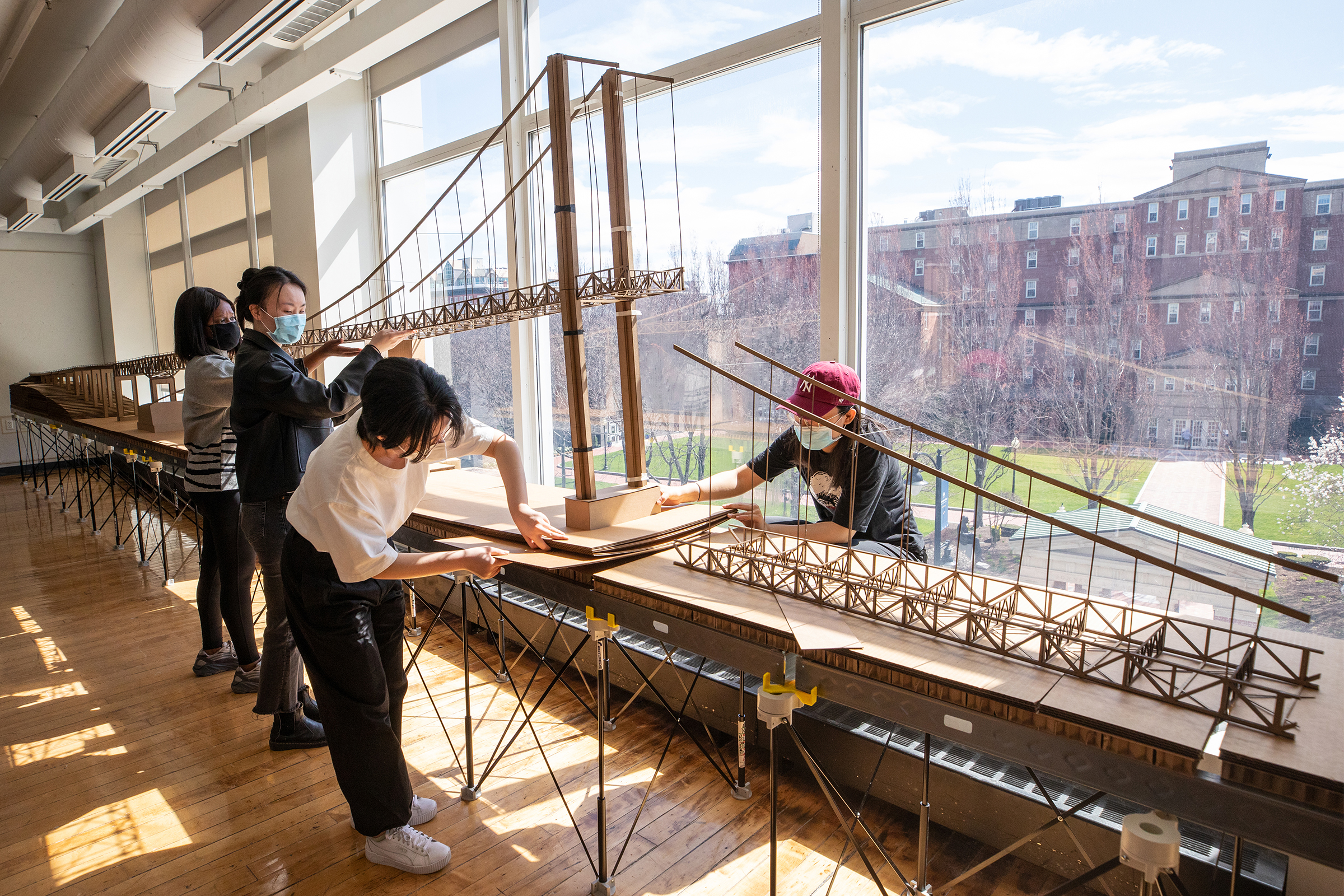
Across the city, at the Palazzo Mora, RISD Interior Architecture faculty members Michael Grugl and Liliane Wong are showing Crossing the Pell in another exhibition titled Time Space Existence. Hosted by the European Cultural Centre, the show brings together an international and eclectic group of participants working across different disciplines on innovative projects that offer “utopian dreams of architectural expression.”
Crossing the Pell poses such questions as “What is the potential for 20th-century autocentric infrastructure in a future of sustainable mobility? Who has agency in imagining the reuse of public works?” A multi-year student exploration at RISD (2020–23), it focuses on the transformation of Rhode Island’s iconic Pell Bridge into an accessible route for pedestrians and cyclists that incorporates a variety of additional visionary elements, like markets, theaters and parks. It incorporates AR/VR technology that provides viewers with an immersive experience of what the bridge could be.
“Crossing the Pell is part of an eight-year teaching collaboration focused on improving public access to design and design processes through the use of simulated spatial experiences,” Wong explains. “It emphasizes community engagement and the inclusion of the public in decisions of infrastructural change.”
The Venice Architecture Biennale is on view through November 23, 2025.
Simone Solondz
July 14, 2025
